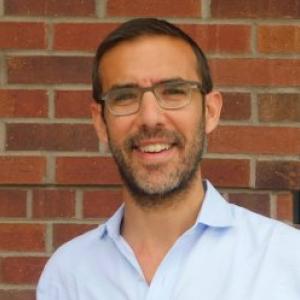Notes from the Director, Fall 2019

Joshua Weitz, Director of the Interdisciplinary Graduate Program in Quantitative Biosciences
Despite their differences, current QBioS student research strives to inject quantitative models and methods into the core of how we discover new principles underlying the structure and function of living systems.
What do functional predictions of post-translational modifications, comprehensive spike-resolved flight motor programs, nutrient explicit phage-bacteria games, and bubble stabilization by the star-nosed mole have in common? The titles would suggest very little. But, in fact, each of these phrases represents the central theme of a recent paper (or preprint) led by a student in the Quantitative Biosciences graduate program in the past year.
These projects are diverse in scale of life – spanning molecules to organisms to ecosystems – as well in methods – spanning machine learning to nonlinear dynamics to computational fluids. Yet despite their differences, each of these papers strives to inject quantitative models and methods into the core of how we discover new principles underlying the structure and function of living systems. In doing so, each of these papers also represents a microcosm of the kind of integrative and interdisciplinary future that the QBioS program and its students hope to forge.
From the outset, the QBioS PhD has strived to train students to become multilingual, able to identify and pose biological questions and then identify, adapt, and (if need be) develop new theory and quantitative approaches to study living systems. The communication of such results is challenging and moving from theory to model to data and back again (and again) takes a certain kind of pioneering spirit and willingness to work at the interface.
In my view, this skill-set poses different challenges than working within a narrower domain. Indeed, it may be particularly challenging when it comes to the moment when such integrative papers – mixing theory, models, and data – are sent out for review.
The challenge of injecting theoretical (and other model-based) results into life science papers is perhaps best summarized by a recent eLife article written by Raymond Goldstein, a biophysicist working at Cambridge University, entitled “Are Theoretical Results ‘Results’”. The abstract is even shorter than the title. It reads as follows: Yes.
I have included this point of view as reading material at the very outset of the first year cohort’s required course in Foundations of Quantitative Biosciences. The point of view builds upon Goldstein’s own experiences to demonstrate ways that theory can generate predictions to be tested and how it can also be used to infer rules and principles beginning from observations.
The article is both timely and relevant, precisely because far too often, the answer to this question in life-science journals is also short, but diametrically opposed: No.
The ‘No’ often arrives with an explanation, e.g., the data should speak for itself, the model is too hard to understand, or perhaps most insidiously ‘the model doesn’t perfectly fit the data’. Indeed, failures to reconcile models and data are often precisely the ingredients necessary to learn something new about a living system works. Yet the no is also cultural and reflects an apprehension about the usefulness of models in the life sciences. Changing such cultural differences takes time, and indeed, new paradigms for training.
I recognize that as QBioS students move further into their dissertation work they will face a new set of problems, moving beyond classes to proposals and towards the latter stages of their theses where ideas have matured into manuscripts ready for peer review. But even as students send their papers out, I think it behooves all of us to reflect upon Ray Goldstein’s core message. It is my hope that both the training pipeline and research discoveries of QBioS students can be part of a positive change and ‘model’ (in a different sense), demonstrating how integrating theory, simulation, and experiment can help understand and predict how living systems work.
Next week, QBioS will once again launch its Fall recruitment campaign, and I am happy to announce that we now have more than 30 students distributed across four cohorts. I look forward to working with the entire QBioS community of faculty and students to continue to build a dynamic training environment.
Good luck to all with courses, proposals, and papers out in the pipeline.
Best wishes,
Joshua Weitz
Professor of Biological Sciences
Director of the Interdisciplinary Graduate Program in Quantitative Biosciences
Georgia Institute of Technology
Atlanta, GA, USA
